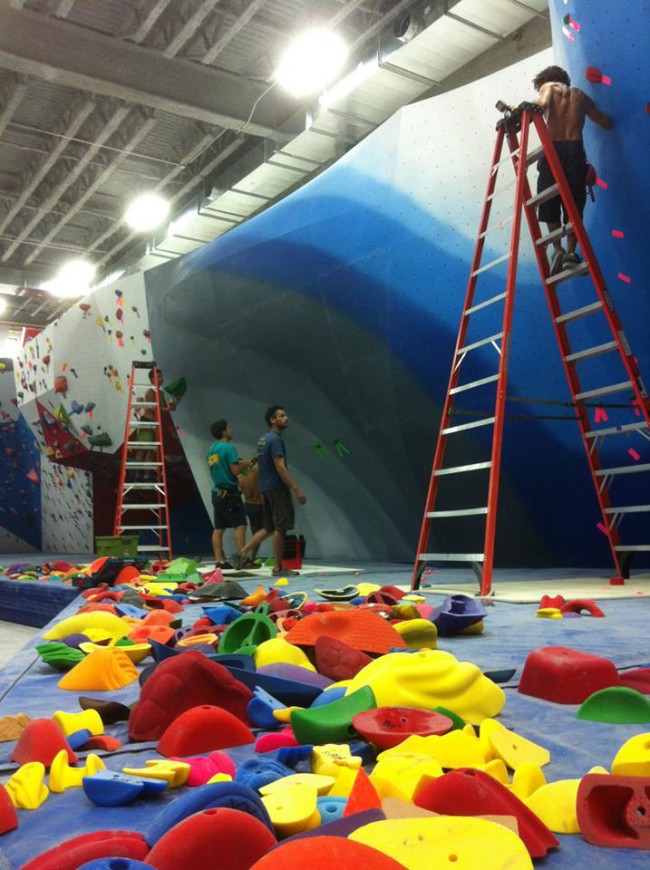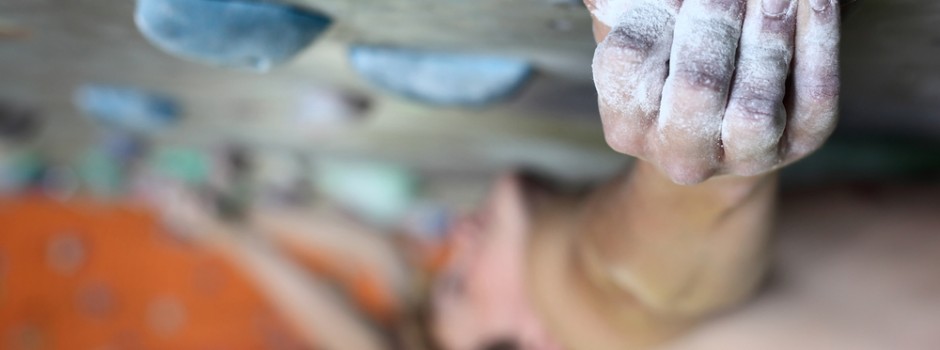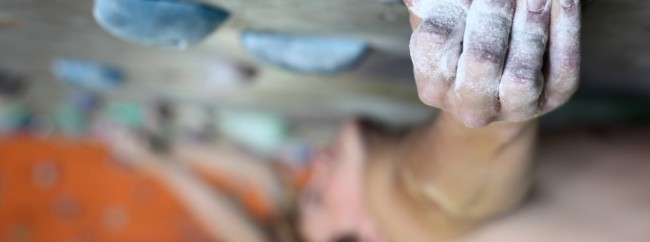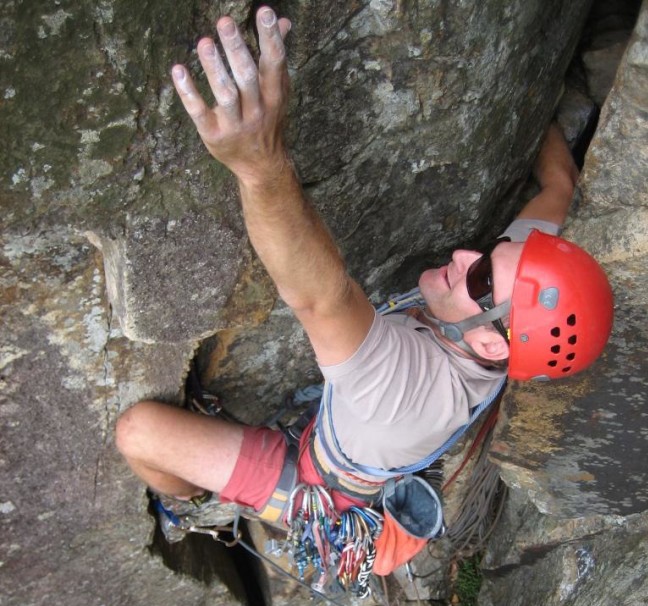
When climbing gyms were first introduced to the public they were a means to an end; climbing gyms were designed as indoor training facilities for climbers that wanted to work on their strength and technique for their projects on real rock. They also provided a place to climb when the weather was not suitable for climbing outdoors.
Many think those days are gone, that indoor gyms are separate and removed from the dirt and hassle of outdoor crags. There is a stereotype of a modern climber that only climbs indoors where its comfortable and convenient. Indeed some indoor climbers rarely or never make it outdoors, either because of a lack of local climbing, lack of desire, lack of equipment or lack of expertise. So how many of today’s indoor climbers actually want to transition to the outdoors? According to most climbing gyms, a lot.
Many climbing gyms help climbers wanting to make the transition to outdoor climbing by offering classes and guided trips. Vertical World in Seattle has an “Outdoor Club”, Upper Limits in Illinois has a Pro Shop to get climbers outfitted for the outdoors, while Edgeworks, Boston Rock Gym, Planet Granite and many others offer ‘Intro to the Outdoors’ instruction. Mesa Rim, one of the largest gyms in the US, advertises a whole suite of clinics — Multipitch, Self Rescue, Anchor and Repelling and even Crack Climbing — to help climbers improve their skills outdoors.
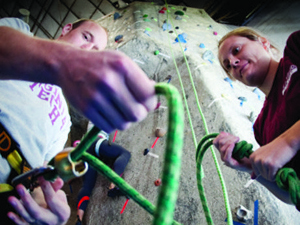
Making a Safe Transition
In the wake of 12-year-old climbing prodigy Tito Traversa’s death, Duane Raleigh of Rock and Ice scolded gyms for contributing to a trend in unqualified climbers that haven’t learned basic outdoor climbing safety. He laments the fact that climbers “reared in gyms” are not learning the basics of knots and ropework, placing gear and building anchors. “When you learn in a gym where the floor is padded, everything is rigged and [you] are ‘certified’ to lead, you can get away with a lot without knowing that much, yet believe you are qualified to experience the real thing,” says Raleigh.
With so many of today’s outdoor climbers getting introduced to the sport through an indoor climbing gym, what role should climbing gyms play in ensuring that these new climbers learn how to climb safely and responsibly outside?
According to many of the gyms we contacted the days of new climbers learning the ropes from experienced climbers out at the crag is over. The rapid influx of new climbers in the past two decades has made this model untenable, and in response many climbing gyms are taking over the role of mentor and educator by offering more formalized instruction in outdoor skills and safety.
At First Ascent, a new climbing gym opening early next year in the Chicago area, the management understands this new reality: “While the sport has always been, and will continue to be, an activity that relies on personal responsibility, it is also a sport that relies heavily on skill development and mentorship. With participation numbers growing as quickly as they have in the past decade or so, the traditional ‘old school’ personal or group mentorship model has been primarily replaced by indoor gym instruction, for better or for worse. We hope to create a broader context for isolated skills so that our clients understand both their abilities and their limitations, as well as the next steps necessary to move into more complex climbing environments and disciplines.”
Down in the flatlands of Orlando, Florida, the nearest climbable stone is eight hours away. Yet the members of Aiguille Rock Gym still want to go climbing outside, and the gym is trying to help out by offering instruction to climbers that have never pulled outdoors.
Aiguille understands the responsibility climbing gyms have in properly training these new climbers. Mark Mercer, USAC Level 4 routesetter and Head Setter at Aiguille, says, “In the old days we would learn from experienced climbers in the gym. The change came when the community grew too large for the newbies to learn from the old-school guys. They started taking road trips to climb outside without having been taught the ethics and safety of outdoor climbing.” To combat this Aiguille offers several advanced classes on the technical specifics of climbing outdoors, like multi-pitch, trad and route cleaning instruction. “Risk management is always the top priority of these classes,” says Mercer.
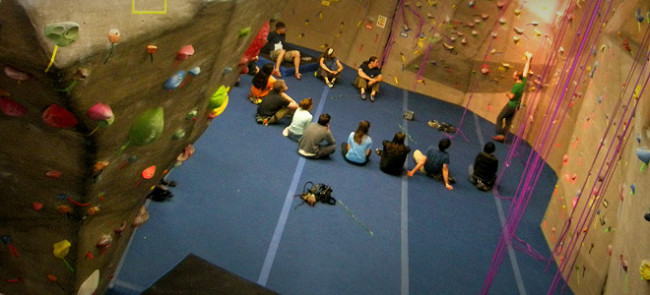
Outdoor Ethics and Etiquette
There is also the issue of teaching proper outdoor etiquette. The Access Fund has recently started a campaign called Making the Transition from Gym to Crag aimed at teaching indoor climbers responsible outdoor climbing practices. The campaign focuses on what should be obvious outdoor manners, such as taking care of your trash and poop, knowing local rules regarding fixed gear placement, and keeping down the noise. The goal is to ensure that outdoor climbers are good outdoor citizens that deserve continuing access to the amazing climbing available on public and private lands.
Climbing gyms also feel a responsibility to make sure their climbers learn outdoor ethics.
Ian McIntosh, USAC Level 5 National Chief Routesetter and manager of San Diego-based Mesa Rim says, “I think [our] responsibility comes into play in that a percentage of new gym climbers will eventually pursue climbing outside and the gym should provide instruction on how to make the transition in a responsible, sustainable and ethical way. At Mesa Rim we do feel a responsibility to teach good outdoor ethics regarding the environment, access, etiquette, and safety.”
Mercer, from Aiguille Rock Gym, agrees that gyms have a responsibility to teaching outdoor etiquette: “The climbing gym has the responsibility of educating their members on the less obvious matters like tick marks; keeping mud off your shoes and crash pads; not greasing up someone’s project as you walk past touching the holds and asking ‘how hard is this?’; and being courteous when you are the second party to show up at a boulder or crag, not stepping on ropes, playing music, drugs, dogs… Recently our gym has taken steps to better educate our members about the ethics involved with outdoor climbing. We run a blog and write an article every month on ethics.”
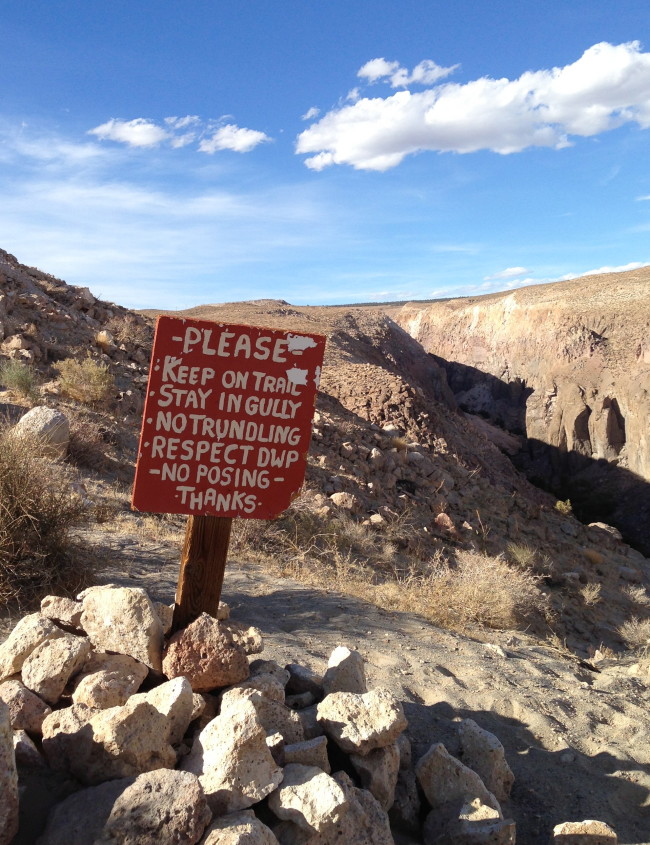
Chris Warner, President of Earth Treks Climbing Centers in Maryland (with another location opening soon in Golden, Colorado) is a big proponent of helping climbers enjoy the outdoors and become stewards of outdoor climbing areas. In fact Earth Treks started as as an outdoor guide service and has multiple programs geared toward helping climbers make the transition from indoors to outdoors. This foundation in the outdoors informs their commitment to teaching more than just the basic skills of climbing outdoors.
Warner says, “Is not just formal classes that gyms need to offer. We really do need a mind shift in climbing if we are to maintain the amazing outdoor climbing resources we currently enjoy. Luckily that conversation is happening on several levels. The Access Fund is hosting an Educate for Access symposium at the Gunks in early November. Earth Treks will be at that event and so should other climbing gyms. If your gym is not a member of the Access Fund, Climbing Wall Association and the American Alpine Club, you need to join … Being part of the solution is a lot better than being a victim of the negative side of climbing’s popularity.”
This attitude may change in the coming years as more and more gyms are owned and operated by non-climbers looking to cash in on the boon of indoor climbing. But for now it seems that climbing gyms are doing their best to introduce members to outdoor rock climbing in a safe and responsible manner.
Will there still be stupid people at the crag? Will people still make ridiculously long tick marks? Will they leave trash and cause erosion? Will they make amateur mistakes that cause injury and death? Yes, yes, yes and yes. No matter how much professional instruction is available, climbers still need to take personal responsibility for their education. Hopefully, the increasing rate of new climbers entering the sport will be matched with an equally large increase in climbers heading to their local gym to learn proper safety technique and etiquette before they hit the crag.






